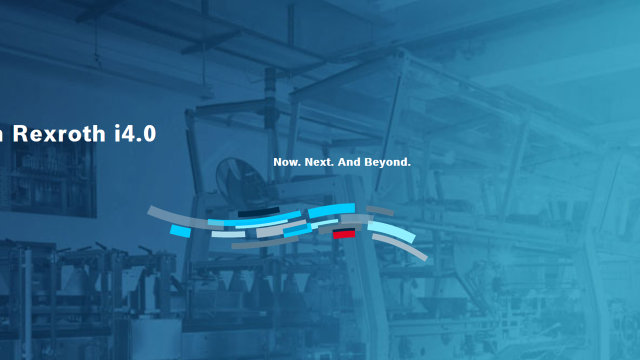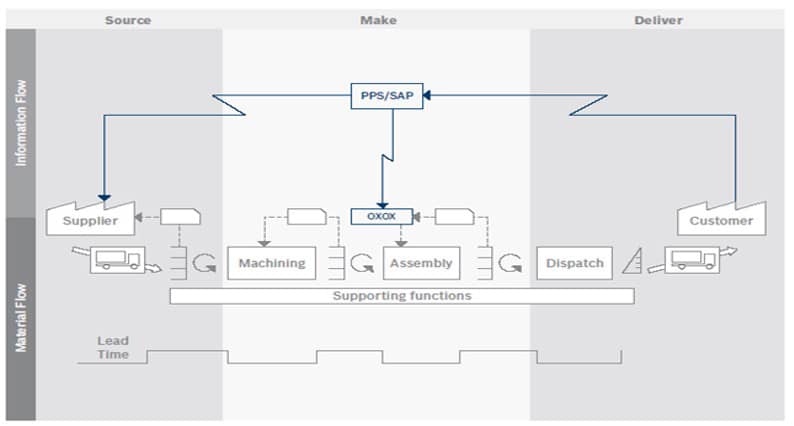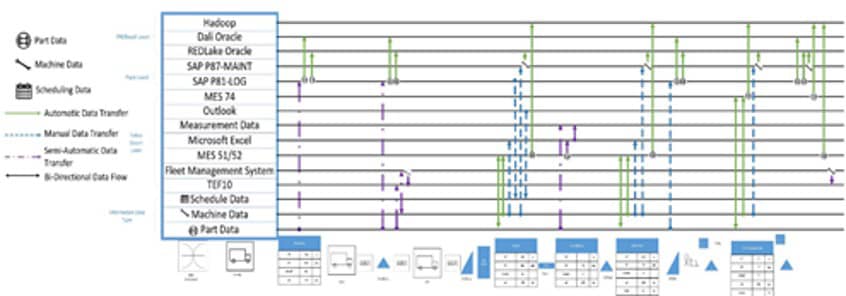



Author: Bosch Rexroth | June 27, 2020
 Introduction
Introduction
As outlined in our previous blog post "How to Start Your Smart Manufacturing Journey" we will provide an outline of 6 main steps or principles to guide you along your journey. Depending on where you are along your maturity level, we try to provide clarity on how to approach the next steps towards your Factory of the Future.

Lean Principles Implementation
There is not smart manufacturing without solid basis. Processes and operations must reflect a high standard of maturity prior to any intervention. This is a necessary pre-condition if we want to avoid the (in)famous "garbage-in, garbage-out" effect.
Focusing on a holistic approach around process improvements a clear vision and roadmap must be established with a path for both OT and IT addressing all company functions beyond the manufacturing process itself which typically was captured in traditional value stream planning without accounting for the necessary details of data flow and administrative process mapping.
Traditional process and material flow below:

Added detail of Information and Administrative process analysis:

Technology Integration The world of industrial automation is slowly transitioning from a set of "walled gardens", where vendors would impose their communication protocols and their IEC standard implementation onto their customers, into a world of open standards, open protocols and open source software.
The drawback of this openness can be found in the increasing complexity of said tools, technologies and platforms. Let me give you a concrete example: an engineer that wants to create an Industrial IoT solution might need to be knowledgeable in control systems, IoT communication protocols, storage and databases, cloud platforms, backend logic, frontend software development, artificial intelligence and analytics, etc.
Nobody can do I(o)T alone!
The market for Industrial IoT solutions is booming with many products that offer a wide range of integration with other existing tools. Companies that are struggling to start their Industry 4.0 journey need to understand their limits and admit that it is ok to ask for some help. Rather than doing everything "in-house", staffing up with IT experts, investing in a secure IT infrastructure, developing software from scratch, it is certainly more cost effective and flexible to explore off-the-shelf solutions and then dedicate the majority of efforts in integrating them with a company's pre-existing tools.
Data Collection
Most manufacturing executives would agree that the most important assets for their operations are people and equipment. This is incomplete, there is another one: data. The importance of data is undeniable, there are plenty of example in business literature that show how early adopters were able to gain significant market advantage by leveraging data.
Within the manufacturing industry there is a plethora of data that needs to be harvested. The first and most important step is to retrofit all of your brownfield applications, installing sensors and IoT gateways, whilst on the other hand redesign or design new machines and processes including state of the art solutions (greenfield).
Data is the key to success for every business, and because of this data collection and data maintenance must become a fundamental activity in every manufacturing operation.
Data Analysis and Visualization
We discussed how data collection is a relatively easy but fundamental step: machines move, sensors create measurements and data is collected in some kind of storage, cloud or on premise. The real challenge now is interpreting the data in such a way that machine-generated raw data become meaningful to humans.
Many are the stakeholders that in every project have to be able to understand the underlying benefit of a new solution: operators, value stream managers, developers, business responsible, and all of them might have a different way of looking at data. For this reason, data must be analyzed and displayed accordingly. Each stakeholder has different questions that they are looking to answer: what are my machines telling me? Are there deeper correlations amongst events? What is my ROI? A good data analysis process needs to take in consideration the needs of all involved in each project.
System Optimization
Leveraging data for improved decision making through e.g. the application of Artificial Intelligence (AI) and Machine Learning (ML) algorithms requires a carefully designed data backbone with a holistic approach of all company functions.
This is especially important since the implementation of respective solutions can consist of up to 90% of the time spend on data cleansing by highly skilled data scientist driving cost up in an unproportioned ratio.
Automated Supply Chain - Integration of Supplier and Customer
Following our lean transformation process where we generally start with our own manufacturing operation to eliminate waste, we expand then to support functions such as logistics (planning and material handling), maintenance and quality to gain additional improvements.
Exponential benefits can suddenly be realized once the "holistic" approach shifts beyond a companyâs own 4 walls to include its supply base and its customers.
Just think about the benefits you can leverage on knowing process status, parts quality and availability of your supplier much earlier in time rather either during incoming inspection or worse, at the time of consumption. Adaptation can be made much easier without creating a massive bull-whip effect.
At the end of this journey, the true benefit AI/ML can bring you is better guidance for your decision making, whether if it's detecting a machine failure beforehand or forecasting supply demand.
Key Takeaways: